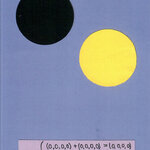Physics

War between NATO and Russia and its allies is a very real possibility. Not a probability or a likelihood necessarily but much more of a possibility than ever since the aftermath of World War II. Given this being a real possibility some hard information on how to survive a nuclear attack is in order. In short if you are in the immediate fireball, blast, or firestorm areas of a thermonuclear attack there is not much that you can do. For most people, the issue is being near a primary but nonmilitary target. Major logistic infrastructure concentrations such as…

Despite breathless reports by non scientist reporters may say scientist at NIST have not warped time or even really done much that has to do with General Relativity directly. What Toby Bothwell et. al did accomplish is as one peer reviewer put it is an “Impressive result in time keeping and Time and Frequency metrology.” In normal plain English they managed to measure smaller units of time than before with smaller uncertainty of measurement than before. What they did was improve on the methods that could be used to measure effects on time at scales where quantum mechanics would be relevant.…

Protons are the fundamental subatomic particles. Under the Standard Model, we know that protons are composite particles with three valence quarks, which, along with neutrons, form hardons. Protons have a measurable size, and historically, their root mean square charge radius was measured using two different methods, converging at around 0.877 fm (1 fm = 10−15 m). A third method was used in 2010 and found a radius 4% smaller than the standard measurement, giving a radius of 0.842. More recent studies brought those findings into questions, with two studies carried out in 2019, one by a…

Although unconventional, the ideas of Gregory Ryskin on vacuum energy sound interesting to me, so I invited him to share them with you in this guest post.
Ryskin's physics journey began with fluid dynamics, first in Russia, then in the US, at Caltech. Later, the flow of complex fluids, such as polymer solutions or liquid crystals. Then Brownian motion and Markov processes. In 2000, he became interested in geology and geophysics, particularly in the causes of mass extinctions and the origin of the Earth’s magnetic field. His current research is focused on cosmology. His academic home is…

If you are a follower of Science20, you probably know that I have always been very liberal in this column about what deserves to be mentioned as a possible new idea in Physics. I even invited some "non-conventional", independent scientists to write about their own ideas and pet theories here, in many occasions. I do not think this collides with the main purpose of this blog, which is to discuss real science and do some proper outreach and dissemination. In fact, I find it instructive and enlightening on what really Science is.
Within a certain level of similarity, the material varies a…

Bernhard Meirose is a researcher at Stockholm University and associate professor (docent) at Lund University. He has a doctoral degree from the Federal University of Rio de Janeiro, Brazil, and has previously worked as a postdoctoral researcher at the European Organization for Nuclear Research (CERN) and at Freiburg University, Germany. He was also a research scientist and adjunct professor with the University of Texas at Dallas (USA). His research focuses on experimental and phenomenological particle physics.
Bernhard was a member of the ATLAS Collaboration from 2007 until 2021,…

Dark matter is one of the most fascinating concepts in physics and is thought to account for 85% of the universe’s matter. They have been so talked about that they have taken on a semblance of fact, even though at this stage their presence is purely hypothetical. Of course, in science, truth is always provisional and the intimate relationship of facts and values means that not only is nothing ever truly “proven” in the mathematical sense, but what qualifies as fact hinges on normative decisions. The presence of dark matter is assumed from various astrophysical observations which cannot exist…

Quantum gravity has fascinated scientists for over a century. The term refers to any theory that seeks to describe gravity in the regimes in which quantum effects cannot be disregarded. Scientists have proposed string theory, loop quantum gravity, and many other theories, but none has achieved universal recognition or been confirmed by the evidence. In that sense, when we speak about quantum gravity, we are speaking not about any single theory, but about one of the great unsolved scientific problems. According to ScitechDaily, a new theory has emerged to compete with these research programs…

For 100,000 years, I have written a holiday card which featured ideas I played with that year in Physics. Note, I was reporting that in binary, so for 32 years, or since 1989. Without further ado, here is the card in 3 parts:

The title of this post is no news for particle physicists - particle detectors are complex instruments and they work by interpreting the result of stochastic phenomena taking place when radiation interacts with the matter of which detectors are built, and it looks only natural that deep learning algorithms can help improve our measurements in such a complex environment.
However, in this post I will give an example of something qualitatively different to providing an improvement of a measurement: one where a deep convolutional network model may extract information that we were simply incapable…